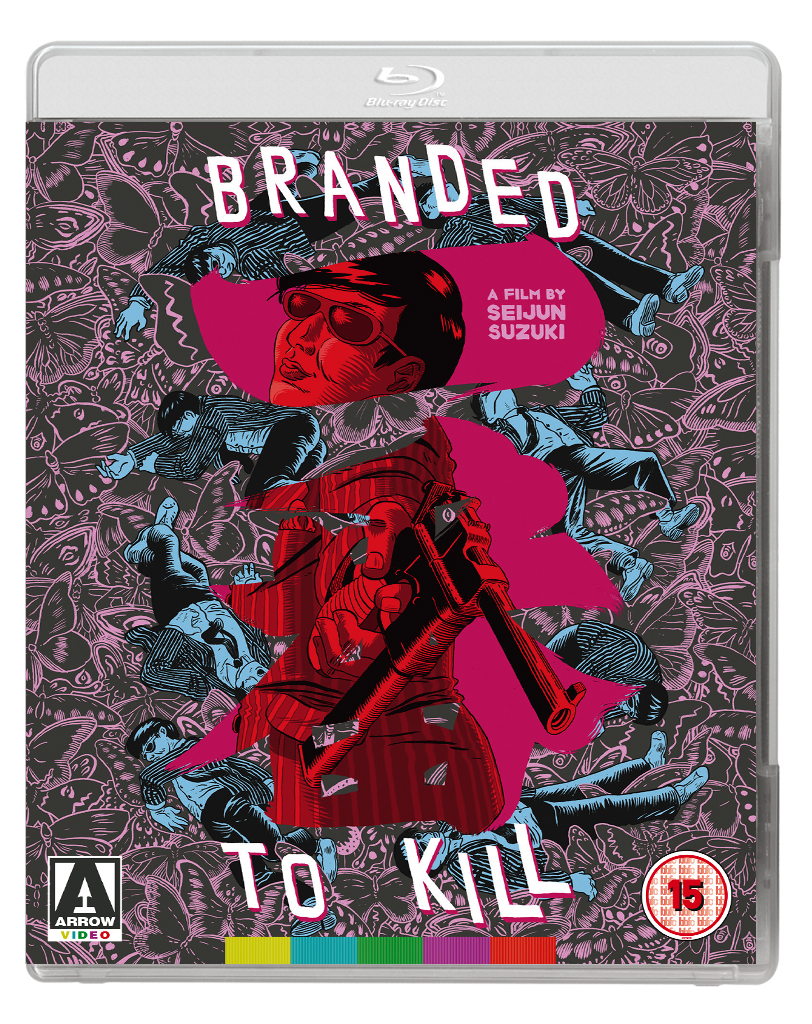
Director: Seijun Suzuki
Cast: Jo Shishido, Anne Mari, Mariko Ogawa, Koji Nanbara
Japan, 1967, 98 min.
Born in 1923, Suzuki, albeit a B-picture director, has found a great following in Europe particularly in Italy, where he has had two retrospectives. The man who said he could edit a film in one day (and shoot five a year, as he did in 1960), was fired from the “Nikkatsu” studio in 1967, after he delivered BRANDED TO KILL, having been told to “make something more conventional” after the wild excesses of TOKYO DRIFTER (1966). BRANDED TO KILL was anything but conventional, and the studio fired him. Whilst his followers (among them Nagisa Oshima) protested and organised screenings of Suzukis films, the studio “confiscated” his films. Suzuki later went to court and won, but he was blacklisted for ten years and could only work for TV. In 1977 he returned to his still prolific cinema output.
BRANDED TO KILL is the story of Hanada (Shishido), who is ‘Number Three’ in the Japanese hierarchy of professional killers. This being upwardly-mobile Japan, Hanada wishes nothing more than to become the ‘Number One’, and when he is approached by the mysterious, beautiful Miskao (Mari), with a kill-or-be-killed contract, he is only too happy to oblige. But when he misses his target, because a butterfly nestles on his gun site, Misako orders Hanadas wife Mami (Koji Nanbara), to kill her husband. But somehow Hanada gets there first, killing his wife and then meeting the mysterious ‘Number One’ killer, who challenges him to a duel for the top spot. When they take a break from plotting to kill each other, the two are bound literally together: eating, sleeping, etc. After he learns that No. 1 has killed Misako, Hanada is looking forward even more to the duel in a boxing ring, when Misako, on crutches, but very much alive appears…..
The wonderful monochrome scope photography alone is enough to fall in love with this film (never mind the narrative), using light and shadow, as in the best American noir-pictures. The jazz music background reminds of Malle’s Lift to the Scaffold, and some of he philosophical exchanges between husband and wife (“We are both beasts, and will die together as beasts”) are existential Antonioni. The original re-framing of conventional shots (due to lack of budget and time) remind of the young Godard. The action scenes are surrealistic absurd (Jarmusch used them later for “Ghost Dog”). Everything about BRANDED TO KILL is eclectic, not on purpose, but equally by choice and chance. Luckily for us, in spite of his ban, Suzuki returned to his old form in the 80s, shooting Pistol Opera in 2001, a sequel to BRANDED TO KILL.
IN SELECT CINEMAS- 25th JULY 2014
DUAL-FORMAT RELEASE BLU-RAY & DVD RELEASE – 28th JULY 2014